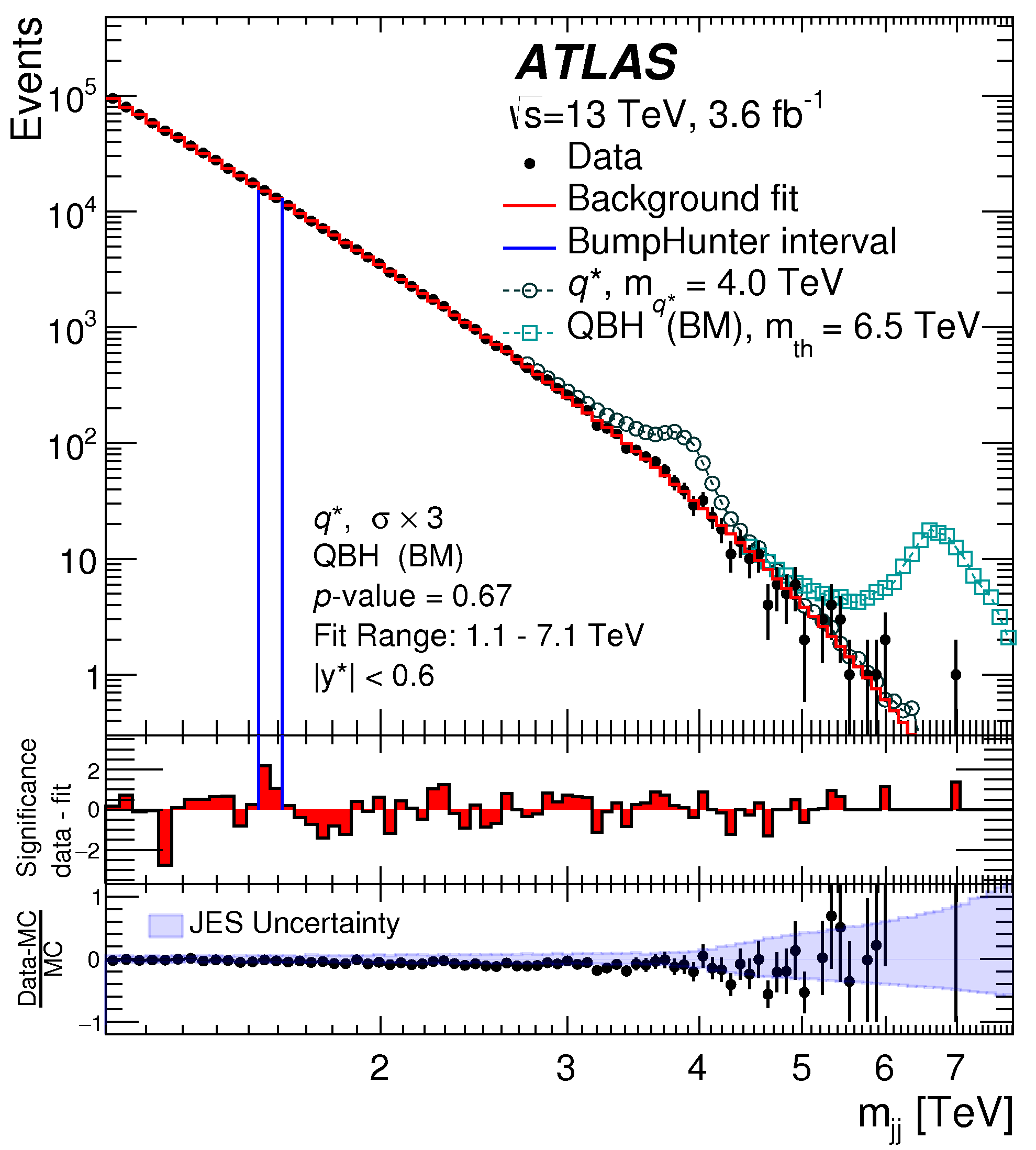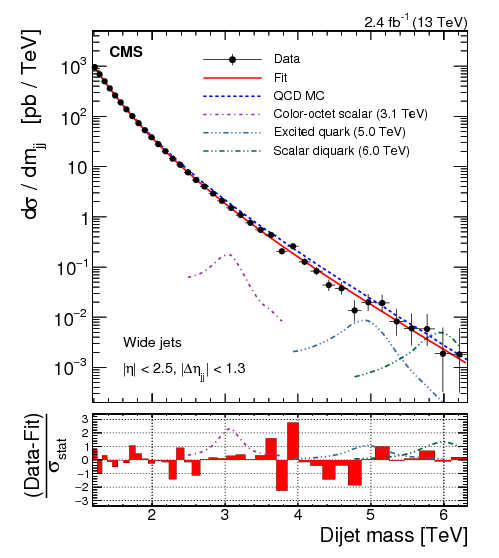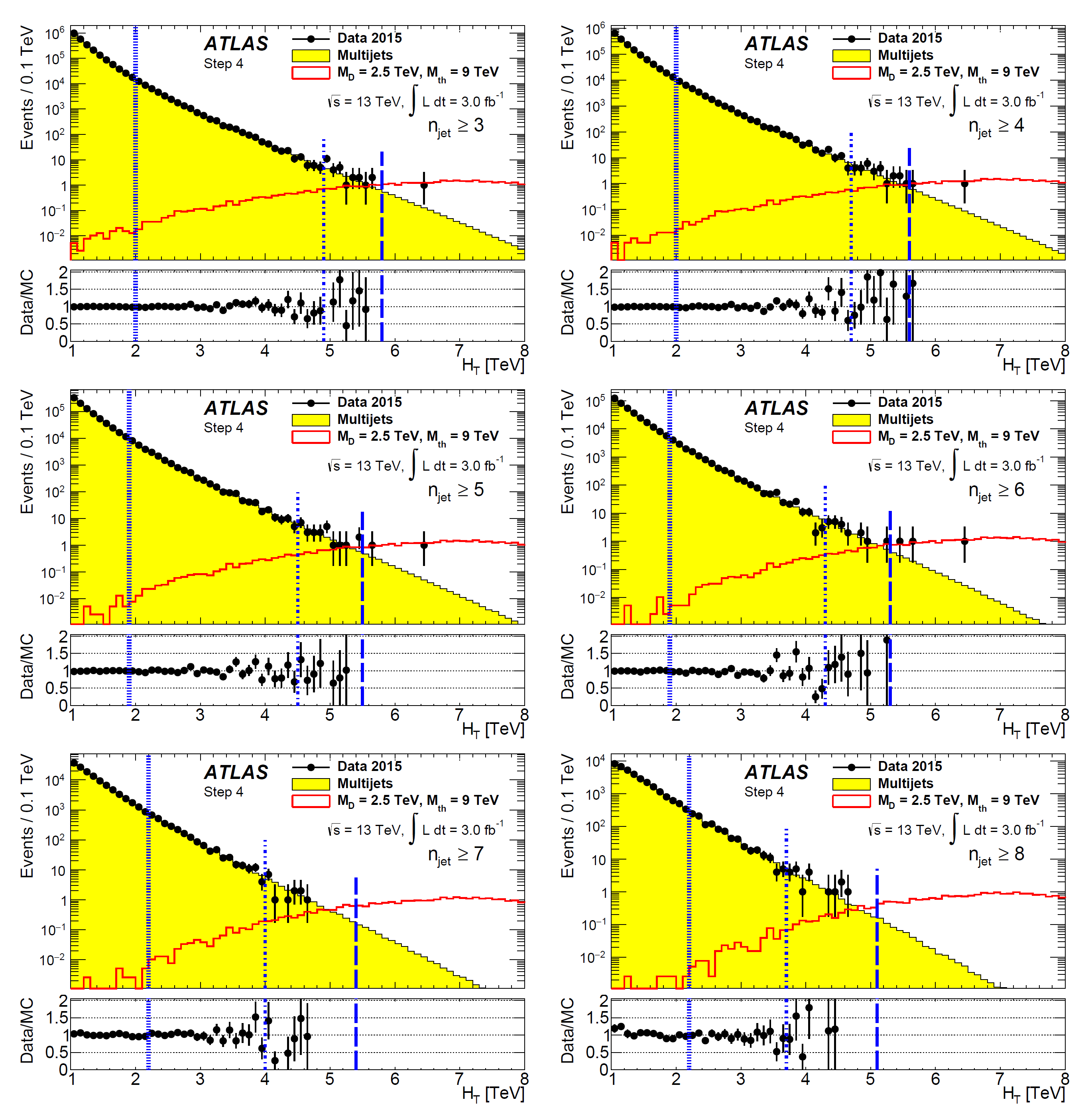A few weeks ago, the Large Hadron Collider [LHC] ended its 2015 data taking of 13 TeV proton-proton collisions. This month we’re getting our first look at the data.
Already the ATLAS experiment has put out two results which are a significant and impressive contribution to human knowledge. CMS has one as well (sorry to have overlooked it the first time, but it isn’t posted on the usual Twiki page for some reason.)They represent a first look at the physical behavior of quarks and gluons at the highest collision energies ever examined. And to the disappointment of many, including me, they show the existing theory’s equations work very well!
The equations of quantum chromodynamics (QCD), which are used to describe how quarks and gluons scatter of one another, make a very clear though qualitative prediction at the energies currently accessible to the LHC. The top quark is the known particle with the largest rest mass; its mass-energy (E=mc² energy) of 175 GeV = 0.175 TeV is dwarfed by the multi-TeV energies that LHC is probing in its current collisions. The other known particles are even lighter. So from the point of view of the highest energies available, all particles in the Standard Model have almost negligible rest masses. QCD itself is associated with the rest mass scale of the proton, with mass-energy of about 1 GeV, again essentially zero from the TeV point of view. And the structure of the proton is simple and smooth. So QCD’s prediction is this: the physics we are currently probing is essential scale-invariant (something like a fractal). That means when we take all the proton-proton collisions that produce two energetic quarks, antiquarks or gluons (each of which we observe as a “jet”, the experimental manifestation of a quark, an anti-quark or a gluon), and we plot the number of events versus the amount of energy (or something similar) in the event, the plot should show smooth, steeply-falling curves, with no bumps, wiggles, shelves, kinks, or anything like that. The same is true if we take events with three jets, or four jets, and so on. If we see anything else, other than statistical fluctuations, then QCD doesn’t work, and something new has been discovered.
Well, this qualitative prediction of QCD seems to agree with the data, as far up in energy as LHC can see. The plot of the invariant mass of the two most energetic jets is shown below; it’s smooth (up to statistical fluctuations) from 1 TeV up to 6 TeV where the data peters out. At the end of this article I’ll post the plot showing the rates for producing 3 or more jets; they are smooth too up to a few TeV.

Here’s the similar plot from CMS:

Important Conclusion: there is nothing going wildly wrong with QCD, as far up in energy (and down in distance) as the newly energized LHC now can probe.
This rules out a lot of dramatic possibilities that might have been in store for us. The whole framework of our particle physics equations (called “quantum field theory”) is certainly not collapsing at higher energy. Quarks and gluons continue to look elementary; they are smaller than a hundred billionths of a trillionth of a meter. Similarly we’d have seen effects if there were new flat dimensions of space with such a size. We’d have seen bumps or shelves if there were a new particle of mass below 5 TeV that could very readily be produced in the collision of a quark and an antiquark, or if there were new particles with a mass of up to 2 or 3 TeV with a high spin or a large amount of color. With this set of plots, we learn there’s not much room for anything so spectacular, nothing that forces us to rethink the whole business of particle physics. Not yet.
But important knowledge about the world doesn’t always arrive with a blast of trumpets. The Higgs boson, for instance, crawled onto the stage over a period of a year (after almost 50 years of waiting) so there’s no reason to be overly disappointed right at the start of 13 TeV data taking. During the next decade or so we will get 1000 times the amount of data that was collected in 2015, and so although we will not be able to look much further in energy than in ATLAS’s new plots, we will be able to look much more precisely. And something less obvious and a bit more delicate may show up.
Indeed, rumor has it that we’ll have something interesting to contemplate as soon as tomorrow.




23 Responses
With a “high spin or a large amount of color”! This is tempting to me because it hints at some generalized knowledge that I can’t yet string together. Why would we specifically see results in this area as opposed to particles with low spin / low color? I’m guessing color because we’re specifically testing QCD principles. But why spin? And THANK YOU for the update, Matt!
I’d like to second that, it is great to have you back! Professor,
/The top quark is the known particle with the largest rest mass; its mass-energy (E=mc² energy) of 175 GeV = 0.175 TeV.
QCD itself is associated with the rest mass scale of the proton, with mass-energy of about 1 GeV, again essentially zero from the TeV point of view. Quarks and gluons continue to look elementary; they are smaller than a hundred billionths of a trillionth of a meter./
“The physical reality of Time dilation and Rest mass cannot coexist.”
A gauge invariance to become massive, it must violate Lorentz invariance and relativity. ? (A failed rythm in dance).
Up to proton distance the clock tick slow, then again tick faster in further smaller distance ?
QED (probability density) is not a failed rythm, but QCD, color charge (top quark) is a failed rythm ?
Standard model is a human imagination, if it is final, Realism, modernism are final. We know there are Wars – but we cannot solve it – (Kantian philosophy) ?
…rhythm…
QED has a flat stage called spacetime to dance with rhythm.
But QCD has curled space, could not dance with rhythm ?
To my knowledge it was Einstein who understood that the FitzGerald-Lorentz contraction hypothesis was to be interpreted not as a contraction of objects but as a contraction of space itself (and with a corresponding expansion of time) as viewed by a observer relative to which the objects are moving.– Physicist Matthew Strassler. ??
More and more, I’m mourning the loss of the SSC
Welcome back!
I would like to echo the above by saying it’s great to read some positive news for a change, it been a chaotic few month for our planets.
W.r.t. the large energy ratio in the LHC, is it possible that the high-energy collisions could create and “artificial particle” even for very, short duration or can natural occurring particles (resonances) only be “released”?
Happy holidays.
Dear Matt, nulla nova bona nova, however , in western movies, when everything is quiet, usually an arrow catches somebody in the back
No dramatic news is news in itself! Thanks, Matt, for your always fastidious interpretation of the data combined with ease of reading.
Thanks for post, Matt
I am glad you are back.
You are a great Professor.
bob-2
Matt, great to be getting an update from you! I’ve missed them. You must be tired and/or under a bit of stress — a few confusing typos. You’re ordinarily so meticulous. I teach business/professional writing at the University of Southern California, and I use “Of Particular Significance” as one of many examples of the need to write well, no matter what your discipline. I’m tired and under stress, too, and not nearly as meticulous as you — so forgive any typos in this comment!
thanks Matt,
guess we just have to love the standard model a while longer. Could you state more clearly what the red curves in the last plot are? They are no “variations” or “deviations” on the black data curve. Are they additive to it?
Echoing previous sentiments–delighted to have you back.
Rumours on excess in dilepton plus missing E and such?
“[The results] represent a first look at the physical behavior of quarks and gluons at the highest collision energies ever examined. And to the disappointment of many, including me, they show the existing theory’s equations work very well!”
Scientists: the only people who go to work every day hoping to discover they were wrong! I love it.
Thanks, Matt.
sean s.
scatter of -> scatter off
Pr Strassler,
I am so happy to read you again. I have have read your whole website.
If you have a chance to write about entanglement entropy; your lighting explanations will be much appreciated as usual.
Thank you very much, and good luck.
Claude
I see that we have tails in the Ht distribution from n>=3 to n>=6 jets.
Should we order champagne??
CMS’s dijet search is submitted too! 😉
http://inspirehep.net/record/1407955
Stay tuned tomorrow for the LPCC seminar, many new results will come out, but I neither confirm nor deny any exciting bumps and wiggles.
Matt, it’s a joy to have you back. An excellent, grounded explanation of some complex material in a manner accessible for the layperson while stretching their understanding, so they are inspired to read more background to fully appreciate it.
I’d like to second this, great to have you back!